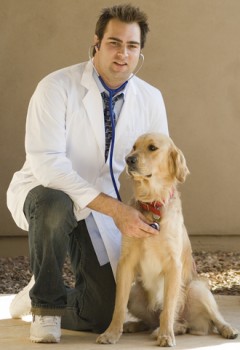 Vets are busy people, and may not have the time to spend observing your dog for information about his health. You can help your vet see these important clues by spending some time observing your dog at home.
Vets are busy people, and may not have the time to spend observing your dog for information about his health. You can help your vet see these important clues by spending some time observing your dog at home.
Looking at the dog when he is not ill will help you to notice more quickly when something changes which may indicate the onset of a disease. The American Veterinary Medical Association recommends you concentrate on the following areas:
1. How much does your dog eat each day?
2. How much does your dog drink each day?
3. How does he look when he is eating and drinking? There should not be any indication of pain when he is chewing or swallowing.
4. How do his ears look and smell? They should not be red, itchy, or stinky.
5. How does his mouth look and smell? The teeth and gums should all look uniform, and the dog should not have bad breath.
6. How often does he go to the bathroom? He should be on a fairly regular schedule, and should not seem to have any pain when he pees or poops.
7. How’s his weight? He should not have large fluctuations in weight, either up or down, without explanation.
8. Have you had to switch foods, medications, or flea treatments lately to improve your dog’s health and comfort?
9. Has your dog reacted badly to changes in your home? Sometimes poor behavior can result from divorce, marriage, new babies, kids moving out, etc.
10. If your dog has an ongoing health problem, how is he progressing? Have lumps or sores grown bigger? Have you had to change a dosage of medication to keep the condition under control?
You might consider keeping a diary of your observations, particularly if you are tracking progress for a chronic health condition. Showing your vet the changes in your pet’s appearance and behavior can help him more accurately care for your best buddy.
Until next time,
Good day, and good dog!

One thing I haven’t done is keep track of how much the Dogs drink.
Very good advice. I will keep a better watch over this from now on.